Estimated reading time 15 minutes, 21 seconds.
Editor’s note: This article was written by Kyle Davis of BDN Aerospace Marketing and first appeared on the BDN blog as a two-part series in September 2017. It is reprinted here with permission.
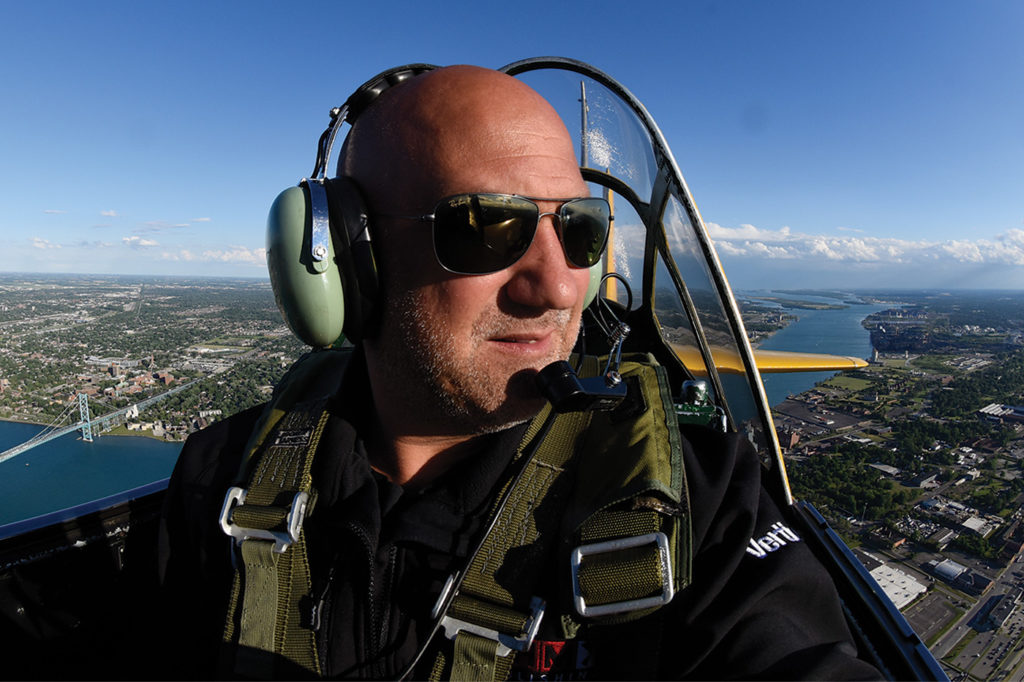
BDN partner Kyle Davis recently had the pleasure of speaking with Mike Reyno, group publisher of Vertical, Vertical 911, Skies, RCAF Today and Insight magazines about the art and science of aviation photography. Reyno is an accomplished photographer, who has been involved in the aviation publishing industry since the early ’90s. His experience and in-depth knowledge of aviation is the foundation that MHM Publishing’s successful portfolio of magazines has been built upon. He has flown in 80-plus aircraft types, and has accumulated more than 1,000 hours shooting air-to-air photography.
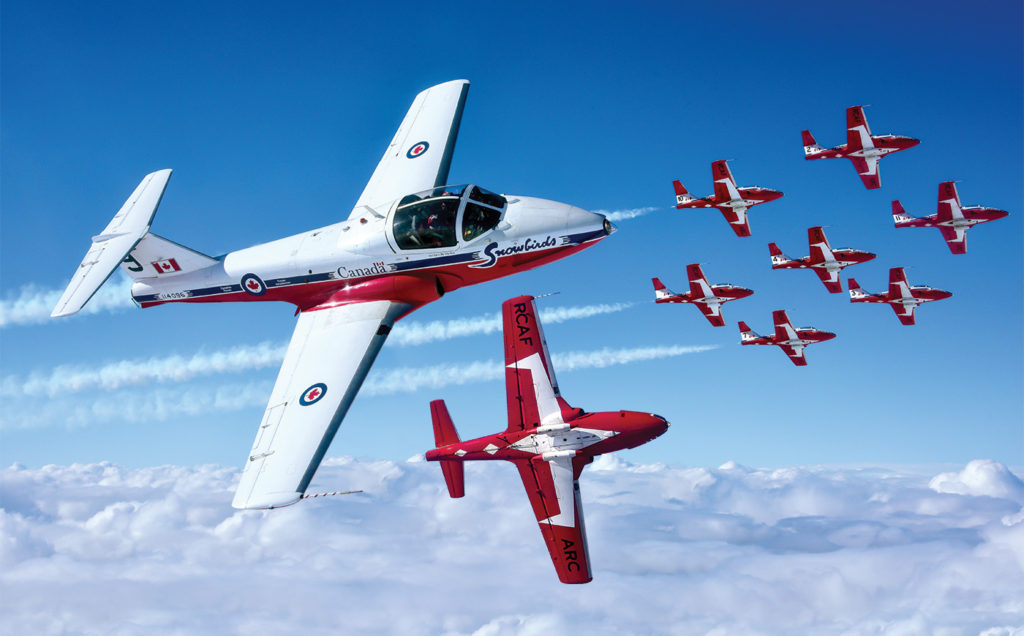
Kyle Davis: You’ve always been passionate about aviation and about great aviation photography. Can you tell us a little bit about how that started?
Mike Reyno: I grew up in London, Ont., about one and a half hours west of Toronto. I first got connected to aviation as a kid going to the London International Air Show. Every year, I noticed there was a group of guys taking photos. So, that was kind of where it all started. When I was about 14, I started taking pictures, too, and my interest in aviation and then photography grew and intensified. And it’s funny, because I always tell my dad, “You never took me skating and you never got me into sports,” and he laughs and says, “But I took you to a bloody air show.” I would go to these shows and shoot 25 to 30 rolls of film, and it wasn’t long before I wanted to take everything to the next level. I was interested in photography as a career and started to notice that all of the photographers at these shows had other full-time jobs. They were police officers and sales reps–you name it–but photography was something they did as a sideline. Well, I wanted to make it a full-time gig, because I loved it. I basically looked at everything that the other photographers were doing and said I won’t do any of that. So I just started shooting and building up my own reputation. I had a little print portfolio in my camera bag and I’d show it to people along the way. My very first air-to-air-photo shoot was in a Sea King helicopter and I took those photos to the guys who flew the jets and they invited me to fly with them, and from there it started to build and I began to really separate myself from all the other photographers.
KD: Were you making money?
MR: I started to make money around that time, and I started to build a good reputation for myself within the Canadian Air Force community, because that’s where it really all started for me and things kind of took off from there.
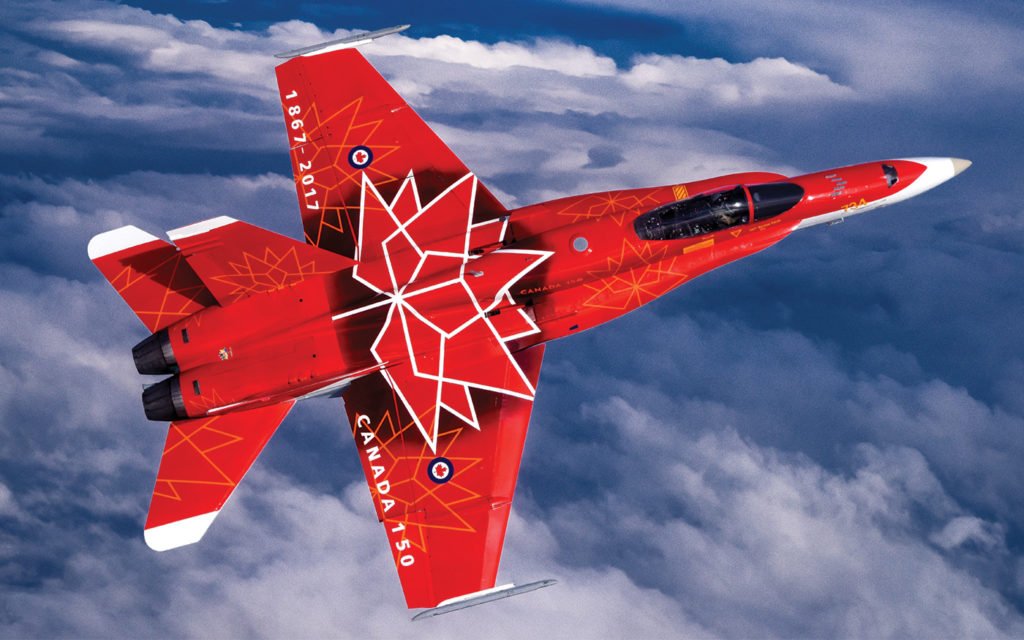
KD: What advice you would give to aspiring photographers today?
MR: My advice to the new generation of photographers is that you have to ignore everything around you. It’s a very clique type of group with a lot of naysayers and critics and you can’t be afraid to do things your own way. You need to have confidence in yourself and your vision for what you want to do and don’t pay attention to what anyone else says or does. That’s what I did in the beginning and those are the guys I see doing phenomenal work today.
KD: Are you self-taught?
MR: When I started, I was just taking photos for fun. I never took a photography course, and I just learned by doing. I still have my first camera from my brother. He reminds me of that all the time.
KD: What made your photos stand out initially?
MR: I think understanding the aircraft and what it can do to get the shot, as well as the people behind the aircraft, is important. But most of all, the photo has to tell a story without a caption. And I think that’s the key and a lot of people are still missing that, but I think that was the difference early on.

KD: There are many aspiring aviation photographers out there. I would guess it might even be harder today than it was when you were coming up?
MR: Well, I have mixed feelings on that, because the difference today is that we have digital. So, with digital you can see the shot instantly. And it’s funny, if you go to an airshow and watch 30 photographers, within one second of a plane going by they’re all looking down at their cameras to make sure they got the photo. In my early days we didn’t have that luxury.
So, in some ways it’s easier now because of the technology. You can take a shot that’s marginal and you can make it look a lot better, and I’m not knocking that because I like seeing how people can take a photo to the next level–but there’s a limit to that because at some point the photo itself gets lost.
KD: Who is doing work today that you admire?
MR: There is a new generation of phenomenal photographers who are taking it to the next level–I’m talking about young guys like Anthony Pecchi. He came into a crowded space and established himself very, very quickly because he’s different, and he has a great personality to go along with his talent. That gets him the access. There are other guys like Jan Jasinski, a Canadian who doesn’t do air-to-air, but does a lot of work at the end of the runway. He does very creative things with his images. He just kind of gives it a little push, but he still maintains the essence of the photo. Another great young photographer is Stuart Sanders. He shoots fighters from the ground and it looks like an air-to-air shoot. He’ll take a photo of a fighter flying by at 400 knots and get a tack sharp image–that’s very difficult. These are guys that are truly creative. On the other hand, you can go to airliners.net and see that probably 80-plus per cent of the images are basically the same. And it’s that 20 per cent that I’m always looking for.

for a photo like this has its challenges. Mike Reyno Photo
KD: So, what are your thoughts on the technical and the artistic aspects of great photography and what advice can you offer?
MR: It can be difficult to have the two blend together and do justice to both aspects. But let’s say you’re a contract photographer who gets assigned to go shoot a Kaman K-Max helicopter. What do I know about a K-Max? What are its capabilities? What are its selling features? What types of photos can I take to really show off what that aircraft can do? The photographer has to connect the dots.
For some photographers–and I’m saying more on the enthusiast side than on the professional side–you’ve got to get past the wow factor of, ‘Hey, I’m flying in an airplane shooting photos and there’s another one flying right beside me!’ As a photographer, you have to know what you want from the shoot and then push the limits to make it happen, and when I say push, I don’t mean from a safety perspective, but to have the confidence to speak with the pilots or whomever. I want to see photographers stand up to orchestrate the photo shoot so they can get that image that’s different, versus just shooting whatever is in front of them.
KD: I’m hearing a common theme about confidence.
MR: Yes. But there are also three fundamentals. So, you’ve got the passionate or artistic side, you’ve got the technical side of photography, but then you also have the technical side from what will these aircraft do. So, imagine I’m photographing an F-18 that likes to fly at 350 knots from an airplane that likes to fly at 250 knots. How can I orchestrate this so we’re going to be safe? You’ve got different performance envelopes so you have to have that understanding as well as knowing not to ask a helicopter to hover into or out of wind, for example. You need to know what the aircraft is capable of and what the pilots are capable of.
KD: People always ask photographers what kind of equipment they use–is that a question you get a lot?
MR: Definitely. And it’s interesting because for a lot of photographers it’s their secret recipe. You know, what lens did you use? What camera did you use? I’m a Nikon guy. I was a Canon guy, but probably about six years ago I switched, and that’s because Nikon at that time had the edge on low-light capability. Now they’re pretty much like Ford to GM, and they both have their pluses and minuses. For me, I’m just so invested in Nikon now that I wouldn’t go back. And I have four lenses that I go to most often: Nikkor 14-24mm F/2.8, Nikkor 70-200mm f/2.8, Nikkor 80-400mm F/4.5-5.6 and Nikkor 18-200mm f/3.5-5.6. I have eight more, but those four are the mainstays.
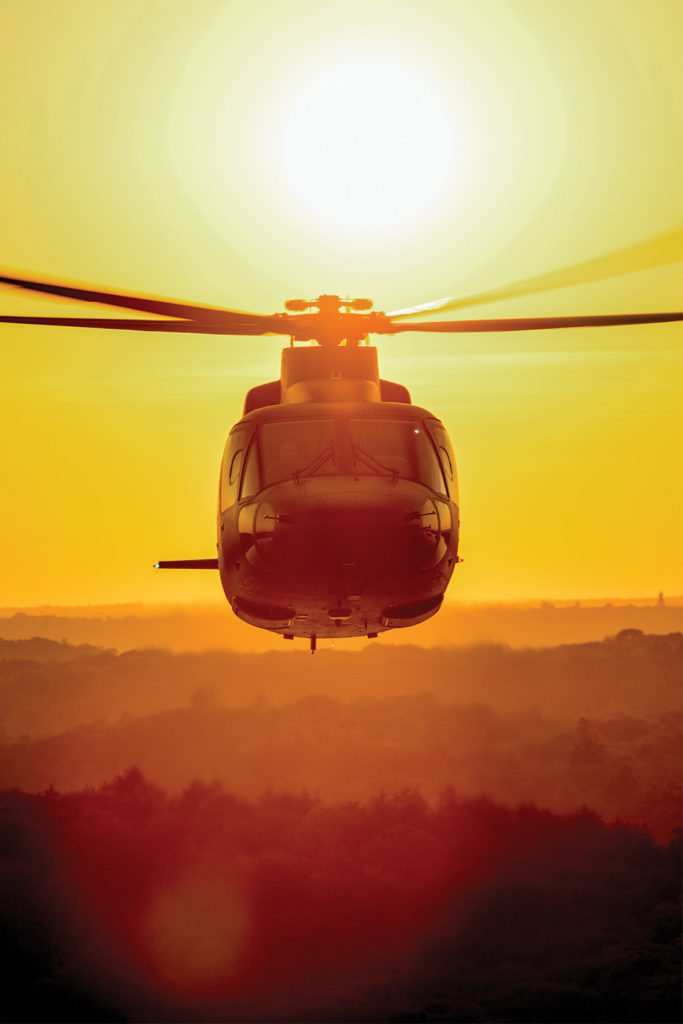
KD: Your magazines are known for their exceptional photography. What do you look for in the photographers who shoot for you and in the photos you choose for the publication?
MR: I always look for what’s different or what’s unique about the way a photographer takes images. Last year, our Vertical photo contest winner was a search-and-rescue technician with the U.S. Navy. He shot a photo while he was in an ice crevice near Whidbey Island in Washington–where he was looking up to a helicopter hovering overhead. We love to see different angles, different perspectives, different backgrounds–as long as it’s done safely–it makes all the difference in what we choose.
KD: Can you talk about shooting helicopters versus fixed-wing?
MR: In some ways, shooting a helicopter is a lot easier, because if you’re trying to get a specific background the aircraft can essentially stop. But then the challenges that come with a helicopter is that you’ve got spinning rotors and vibrations and wind coming into an open doorway. With fixed-wing, the challenge is that you know the background you want, but it’s hard to make it happen when you’re flying by at 300 knots. I did a photo shoot with the Breitling Jet Team two years ago and we had four quick fly-bys over Niagara Falls, and that was it. I got the shot, but it’s tough because if you don’t get it … you know it’s a lot of money, and that’s the other thing. Doing air-to-air is a huge expense–from $600 to $7,000 an hour for an R44 or an S-92 to $40,000 for a CF-18. So, you’d better come back with the shot.
KD: What’s the most you’ve ever seen someone spend on a photo shoot?
MR: Around $50,000, just for the aircraft time alone. It’s big, big bucks, and you’ve got to make sure that the photographer you’re using can do all those things we just spoke about.
KD: You spoke about the new generation of young photographers who are doing great work. What about some of the more established people?
MR: Ted Carlson, Eric Dumigan, Dan Megna, Heath Moffatt and Skip Robinson come to mind. Also, Rich Cooper and Ned Dawson are really talented. Paul Bowen is in a class of his own on the business aviation side. And the ultimate photographer would be Katsuhiko Tokunaga, who just dominates with military stuff. Paul and Katsuhiko are the two biggest names in aviation photography. They both demonstrate the ultimate as far as professionalism and they are two of the nicest guys you’d ever hope to meet.
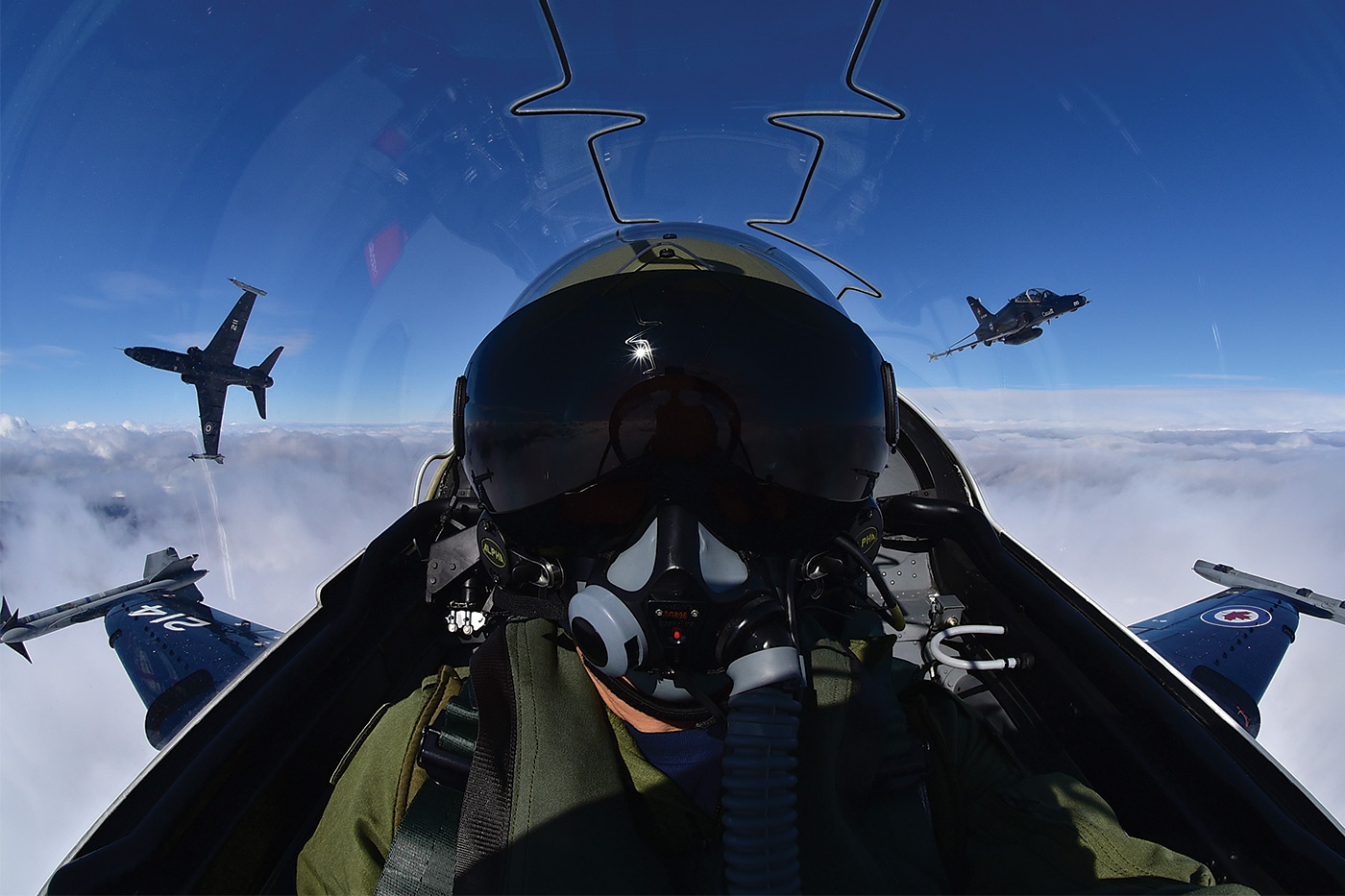
KD: So, you’ve been involved in a lot of photo shoots, including air-to-air as we’ve discussed. Have any of them been especially memorable or interesting, and have you had any close calls?
MR: Yes, but it wasn’t a close call; we actually hit in mid-air. It was in 2001 and I was flying with the Snowbirds at the London air show. It was a media day and I was actually not even taking photos when we had the problem. The photo shoot went well, but there was miscommunication between two pilots during a rejoin and we basically met head-to-head. We took off his tail with our wing and he took off a big chunk of our leading edge. So we’re over Lake Erie, the crew in the other airplane had to punch out, and then for probably 10 minutes we weren’t sure if we’d have to punch out as well. We didn’t know if we could make it back, but ultimately we did and the guys who ejected were all OK, too. I think it took about a month and a half before I would get back in an aircraft but–knock on wood–that’s the only time I’ve ever had an incident and I’ve never had a close call since. Safety is everything. At the end of the day, it’s only a photo.
KD: Tell us about some of your other most memorable flights.
MR: Some of the more interesting ones I think have been where I get out into the bush. So, if I go to Airbus and I do a photograph of an H125, that’s one thing. But then I go out into the field and I see how they put that helicopter to work. The best part of what I do is bringing that to the reader. I can show them the utility of taking one helicopter type, like an AStar, and that helicopter probably does 20 different things. So, it’s one thing to see it at the manufacturer, but to go out into the field to show what they’re doing out there, every one of those is memorable because it’s something that’s always unique and often amazing.
KD: What about any parting shots or wisdom? Are there any topics you’d like to talk about that we haven’t covered?
MR: Sure. Too many people in the industry don’t understand the value of aviation photography, and, frankly, they don’t want to pay for it. But a lot goes into every photo. First, I had to fly there to shoot it. I also had to have the knowledge base to brief it so we could do everything safely; but, you know, there is a risk element that comes with this work. There’s the creative and technical talent. So you try to factor that into what you’re asking for the photos. Still, I’d say 90 per cent of people just don’t understand the value that goes with it. They think you just went up in the airplane and clicked. The other thing that I’ve talked about a couple of times is the safety element, so we’re careful about what we show in our magazines. We don’t want selfie sticks out the windows and things like that. We’ve seen a lot of videos and photos of accidents or aircraft doing some pretty stupid things, and that can create a perception outside of our industry that is not what we want. This isn’t the Wild, Wild West. We’ve got to be safe.
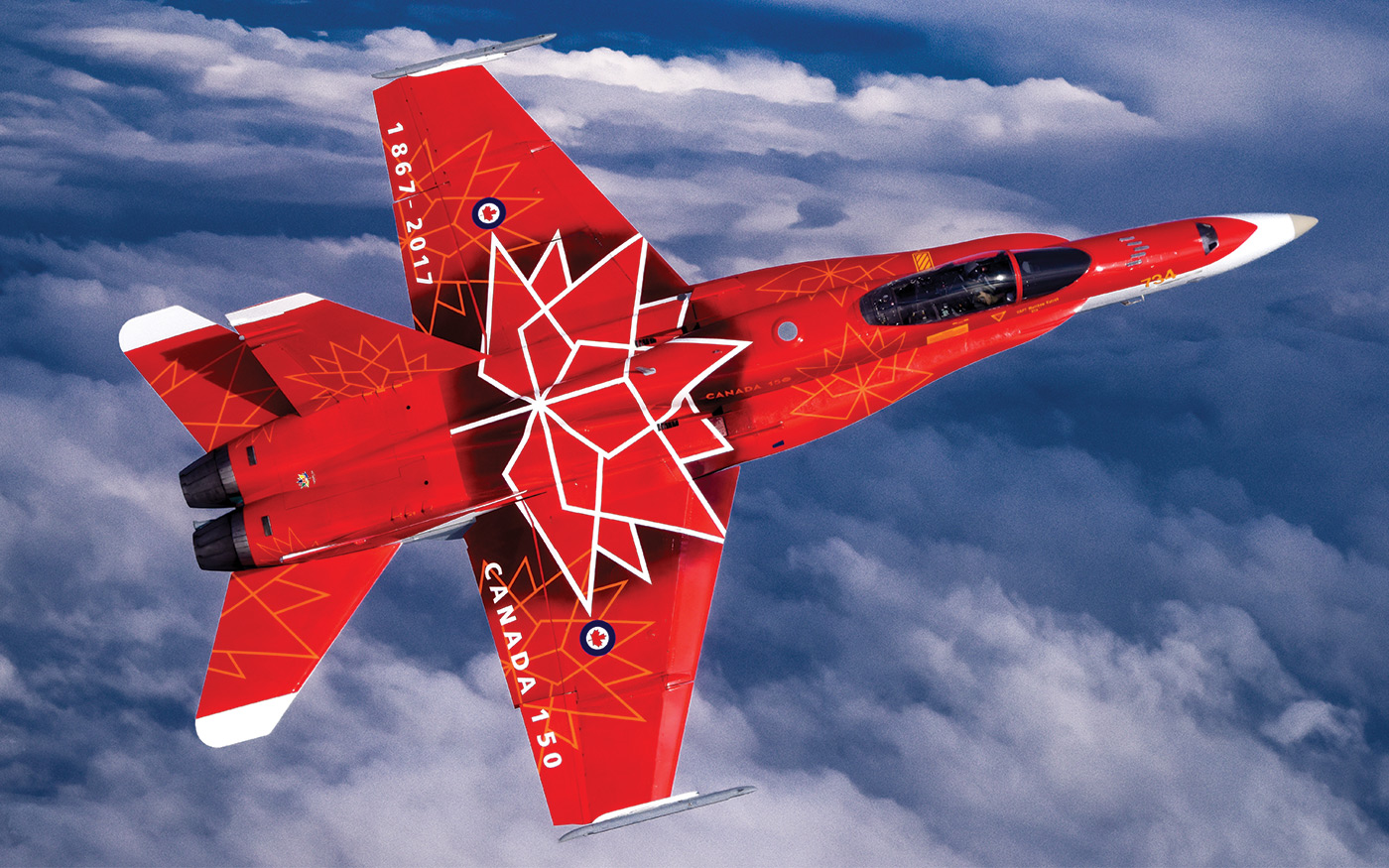

Mike,
I am looking for some photos you have taken for the 75th CAF anniversary edition. I was a SAR Tech at the time and you took some great photos of our SAR equipment and the CH113 Lab in Trenton. I misplaced the magazine and now in search of the photos. Thanks in advance,
Regards.
Hi Steve, could you please email me directly with your request and I’ll see that it gets passed to Mike: lisa@mhmpub.com.
Thanks!